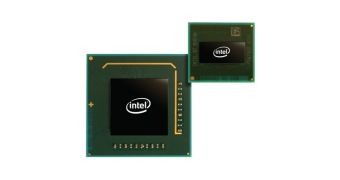Not satisfied with the company's current roadmap for Atom processors, Intel's CEO, Paul Otellini, has just announced that the Santa Clara chip giant will quicken the pace at which it rolls out new Atom core designs.
By going this route, Intel hopes that it will be able to push its Atom processors inside smartphones and tablet devices.
“We decided our road map is inadequate, and we needed to change the center point," said Chief Executive Officer Paul Otellini during an analyst meeting, reports the EETimes publication.
Otellini then explained how the company is set to release a 14nm Atom core called Airmont in 2014, the same year this fabrication process makes its debut in Intel's mainstream CPUs.
Right now, the Atom processors are built using the 45nm manufacturing technology and lag Intel's PC chips by a generation.
However, the new accelerated design will create a “very compelling road map [that] doubles the pace of Moore's Law,” said Mr. Otellini.
The next Atom processors are expected to arrive in the forth quarter of this year and these will be built using the 32nm fabrication process, while the first 22nm Tri-Gate Atom chips, code named Silvermont, will see the light of day in 2013.
Starting with the 22nm process, Intel will also change the power envelope of Atom notebook designs, from 40W to a 15W power target.
In addition, it will also manufacture a greater number of SoC solution to cover chips that range from less than a Watt to nearly 10W.
Otellini also referred to the mobile market and said that, in the first half of 2012, Intel will have a major smartphone design for Medfield, the 32nm version of Atom, while Dadi Perlmutter, Intel's vice president, showcased a Medfield smartphone design and a 7-inch tablet running the Android Gingerbread operating system.

 14 DAY TRIAL //
14 DAY TRIAL //